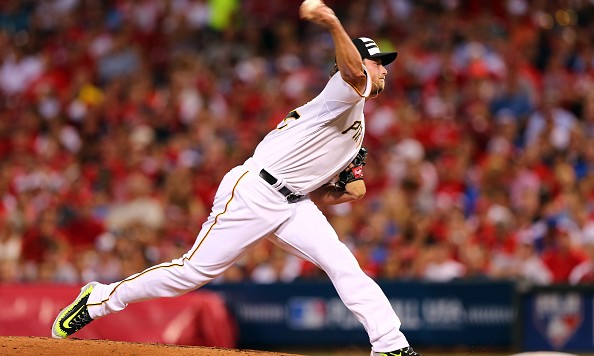There’s a cool little juxtaposition in the Big Data Baseball (I didn’t get a chance to read this right when it came out and I’m not sure I’ll do a full review, but I hope that the constant references that I’m making to it as I read it are enough of an endorsement for anyone reading this site that hasn’t read the book yet) chapter about Charlie Morton that I thought was a great insight into how Ray Searage (and probably Jim Benedict, too) work with the Pirate pitching staff. On one page, Searage is talking about how he hated the way that every team he pitched for try to make him a different pitcher and how he swore he’d never do that as a pitching coach. On the next, Searage is undoing all of the work that his predecessors in Pittsburgh did with Charlie Morton by telling him to ditch his four-seam fastball and dropping him arm slot. The implication is that he didn’t so much change Morton — the curveball, the velocity, even the sinker were all parts of Morton’s repertoire at various points in his career — so much as he sculpted Morton into the pitcher he was supposed to be.
This main outline — not to change pitchers, but to help them discover what they do well — is exactly what the Pirates have done with Gerrit Cole since he was drafted in 2011, and the results this year are spectacular. To a more casual observer, Cole is almost the exact same pitcher that he was when the Pirates drafted him, perhaps with a bit more control. He’s built like a tree, he throws hard deep into the games, he has an incredible slider that is borderline unfair to hitters. That glosses over the interesting part of the story, though. Remember: Cole’s college numbers never seemed to match his stuff. In his three years at UCLA, his ERA was never under 3.31 and he variously struggled with control, home runs, or just too many hits allowed for a pitcher of his ability. If you Google “Gerrit Cole flat fastball” you can find a bunch of scouting reports and stories from the 2011 draft on through his call-up in 2013 that all worried about the same thing: his fastball was hard, but hittable.
The Pirates set out to fix this right away, I think, but in doing so they created one of the more curious minor league careers I can remember. Cole flew through the minors (38 total starts before his debut), his ERAs at every level were impressive, but his strikeout rates never hit the level you’d expect from a flame-throwing to pitching prospect. The expectation was that Cole would sand-blast his way through the minors with a mountain of strikeouts in the way that Tyler Glasnow has in the last couple of years. Instead, Cole’s strikeout rates in the low minors were right around 9 Ks/9 innings, and his Triple-A rates before his promotion in 2013 were much lower. Scouts always raved about him, but his lack of domination certainly raised some questions.
It’s all much more apparently now: the Pirates weren’t interested in Cole overwhelming minor league hitters to put up a meaningless Single-A strike total, they were interested in building him into the most complete pitcher they could make him into. The less-than-impressive minor league strikeout totals came from the Pirates adjusting his fastball plane to make it less flat, it probably came from them re-emphasizing his two-seam fastball, and it came from them making sure he could throw both pitches for strikes. Once he got there, the off-speed stuff was mixed back in. It took a while for everything to come together, but now that it has, the results are impressive. It’s not just the high strikeout rate (116 in 117 1/3 innings) and low walk rate (2.1 BB/9) that make Cole so good, it’s those two things combined with a ~53% groundball rate.
Nobody accuses Cole of having a flat fastball now; his sinker his nasty and his four-seamer is capable of ridiculous things. Cole’s arsenal is good enough to strike hitters out, but it’s also versatile enough that he doesn’t have to. That’s what’s made the difference for Cole this year: he hasn’t made many (or any?) of the 75-pitch-in-four-shutout-inning starts that sometimes bedevil young strikeout pitchers. What’s most impressive to me is this: Cole’s stat-line this year is the best of his career at any level, including the years he spent in college and the minors as an outsized talent in a small pond. The Pirates have done this sort of remodeling on a ton of pitchers over the last couple of years, but Cole is by far the most talented pitcher they’ve had to work with. I don’t mean to slight Cole here, either, because he put in the work necessary to get to this point. What we’re seeing this year is the culmination of someone’s vision on draft day in 2011, and the results are spectacular.
Photo by Justin K. Aller/Getty Images




















